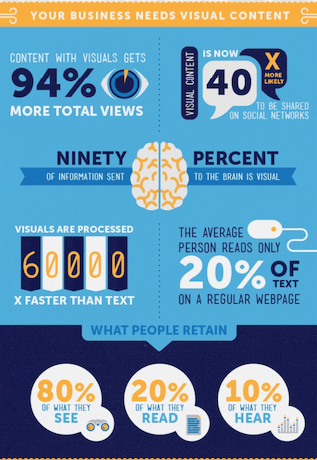In celebration of graduating Northern Kentucky University with my Master of Science in Business Informatics, I recently traveled to Cuba, making it the 17th foreign country I’ve visited. During my trip, I reflected on how I got there, why travel is so important to me, and how it has impacted my professional, and personal, life.
Traveling can give you a much-needed break and disconnect from the office, along with the 24/7 stream of messages flowing into your inbox. While that’s true, there’s plenty of benefits to your career and professional development that you will take home with you. Think of these five reasons as lifelong souvenirs after taking that trip abroad.
Open Your Eyes to New Perspectives

Like presents, people come in all different shapes, sizes, and backgrounds. Being a successful marketer requires having a great deal of empathy. You must know what your audience cares about, what their pain points are, and what they are sensitive to. The best way for you to grow your sense of empathy and ability to shift the lens of how you see the world is to see the world, put yourself out there, and meet others that are different.
Think about creating audience personas. It’s a best practice to create an audience persona, with an actual name so you can make this process more personalized, and then discover the persona’s wants, needs, pain points, lifestyle, and so on. The foundational skill for this process is empathy, and no marketing textbook, influencer, whitepaper, or conference can teach it to you.
Develop a Sense of Multiculturalism

A large chunk of managers who are sent abroad end up failing. If getting an overseas assignment is something that excites you, then you’ll want to get a head start on getting experience abroad. When working with, and marketing to, people of other cultures, it’s critical to be aware of their cultural norms and sensitivities. This includes having at least a basic working knowledge of their language, political climate, history, food customs, religious practices, culturally-specific phrases to say or avoid, and nonverbal communication, including tone-of-voice, hand signals, gestures, and spatial orientation. If you get any of these wrong in your marketing tactics, then you might do some massive damage to your brand, or even get into legal trouble.
A facepalm worthy example of a brand shooting itself in the foot is the United Kingdom based Tesco supermarket running a Ramadan promotion featuring smoky bacon flavored Pringles. Think about that for a second… There was also this rough example of people publishing a post so wrong that it landed them in jail. A pair of Instagram influencers focused on travel who posted a revealing picture of their butts at the world-famous Wat Arun temple in Thailand, a Buddhist country (wow did they mess up!). They were arrested for this picture and deported back to California after spending two weeks in jail, although they could have faced several years in prison. For additional context, many temples in Thailand require modest apparel to be worn out of respect (shorts aren’t even allowed at some), so that single Instagram post was an enormous disrespectful slap in the face to the Thai people.
On a positive note, having a multicultural bent enables you to ask questions and do your research before launching a new marketing campaign. Not only will you avoid an embarrassing blunder, but you will also be able to cultivate a deeper understanding and appreciation of a culture different than your own. This makes you a smarter and more engaged global citizen while also empowering you to build authentic connections with people different than you. Ultimately, you’ll be able to engage more in-depth with a culture and reap the rewards both professionally and personally. As the United States is a very diverse country, having multicultural awareness and communication skills will benefit you at home and abroad.
Discover Different Ways People Receive Information and Communicate

People around the world communicate in different ways and through different platforms. As marketers, we need to understand where our target audiences spend their time, how they like to get their information, and which communication channels they use. Knowing this information allows us to craft relevant marketing campaigns for our target audiences and optimize content that’s deliverable to them.
By traveling, you’ll get a better understanding of a society’s culture, which has a major impact on how they receive information. If you’re in PR, you’ll need to know which media outlets operate in that country, what their reputation is, and if they have any bias towards a certain topic. While researching this information, the knowledge you gathered on your trip could help you weed out certain media outlets or digital platforms quickly.
Being Adaptable and Able to Switch Gears on the Fly

You can have the most ingenious marketing campaign or strategy crafted, yet things won’t always go your way. Your targeted audience might not respond to your ad, your content calendar might not cultivate much engagement, or your campaign might not yield conversions. It can happen to the best of us. What will set you apart is your ability to take these circumstances, adapt to them immediately, and make changes to improve the outcome.
How does traveling play into this? Well first, no travel itinerary goes 100% according to plan. I’ve had my fair share of “WTF do I do now?” experiences in unfamiliar countries. This recently happened to me within my first hour of being in Cuba. I forgot to ask the taxi driver who picked me up from the airport to call the Airbnb host and let him know I would arrive at the apartment momentarily. So, I got dropped off on the street in the middle of Havana in front of an apartment building without the host anywhere to be found. With my elementary level Spanish, I asked a senior woman on the street, who luckily happened to live in the same building, to call him. She and I could barely understand each other, but she was very kind and helpful, and he showed up 15 minutes later!
As marketers, we need to understand that plans don’t always go as expected. Creating contingency plans is always a good business practice, but sometimes weird things happen that not even the contingency plans cover. That’s why it’s important to train yourself to be adaptable in unfamiliar situations and scenarios where things go wrong. Traveling gives you the skills to shift your plans, think creatively for outside of the box solutions, and ask for help from people at a moment’s notice.
Discovering, Appreciating, and Capturing Beauty in all its Forms

When is the last time you looked down the street, stopped, and thought to yourself, “Wow, this is incredibly vibrant and beautiful with many stories behind it,”? It can be easy to glance over, but even typing that very sentence made me take a closer look down Main Street in Covington’s Mainstrasse (my neighborhood) and have a moment of appreciation for all the culture and history behind it. Traveling gives you that appreciation for all the beautiful things that the world and life have to offer, which can directly result in a more creative eye. Visual content is the trend in marketing right now with no end in sight. On social media, your posts better at least have a compelling image tied to them if a video isn’t possible.
Traveling will give you that curiosity to explore, appreciate, and capture beauty in all its forms. As you snap and record away, you’re going to refine your photography and videography skillset. You’re also going to learn to look for appealing visual content in ways that you never did before. For me, my first trip abroad to Italy in high school solidified my interest in photography and travel, and then taking a professional photography class while studying abroad during my undergrad in one of the most beautiful countries in the world, Costa Rica, has given me an eye for capturing visual content that I wouldn’t have otherwise. You don’t need to be a professional photographer or videographer to capture beautiful visual content worthy of sharing; you just need to know how to look for it, recognize it, appreciate it, and then represent it through the appropriate marketing channels.
Final Thoughts

In the end, traveling alone won’t make these five reasons come to life for you. You are responsible for that. Travel is the vehicle, and you’re the driver. You own these experiences and the outcomes of them. If you go to a country and just want to spend time at the all-inclusive resort’s pool while only interacting with people who can speak English, then you’re going to lose out on a lot of experiences and context that will help you grow. Successful marketers think outside of the box, are willing to take some risk to be innovative and reap great rewards, have an open mind, and are adaptable to all the unexpected curve balls that may be thrown at them. Traveling the world will help you build and refine these skills. No marketing class, book, whitepaper, blog (even this post), or whatever piece of content can teach these to you. There’s only one way to do that, and that’s to experience the world yourself.
In case you’re wondering, Cuba is an amazingly vibrant, beautiful, fun, and safe country to explore. To get a glimpse of what I experienced in Cuba, check out my album!














